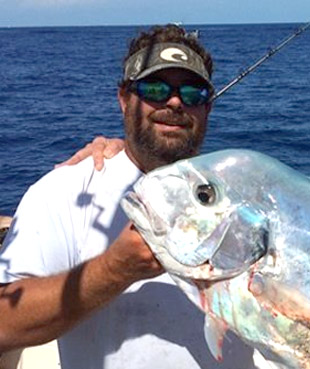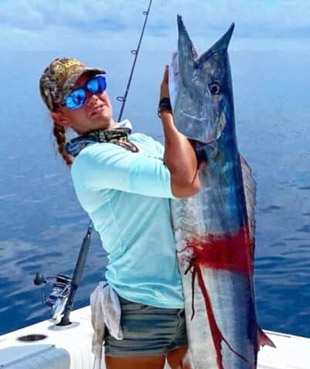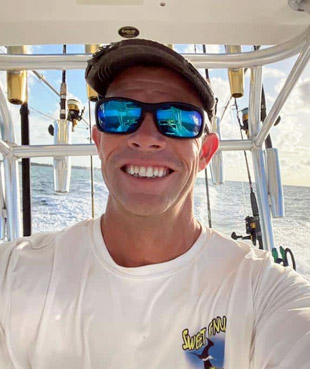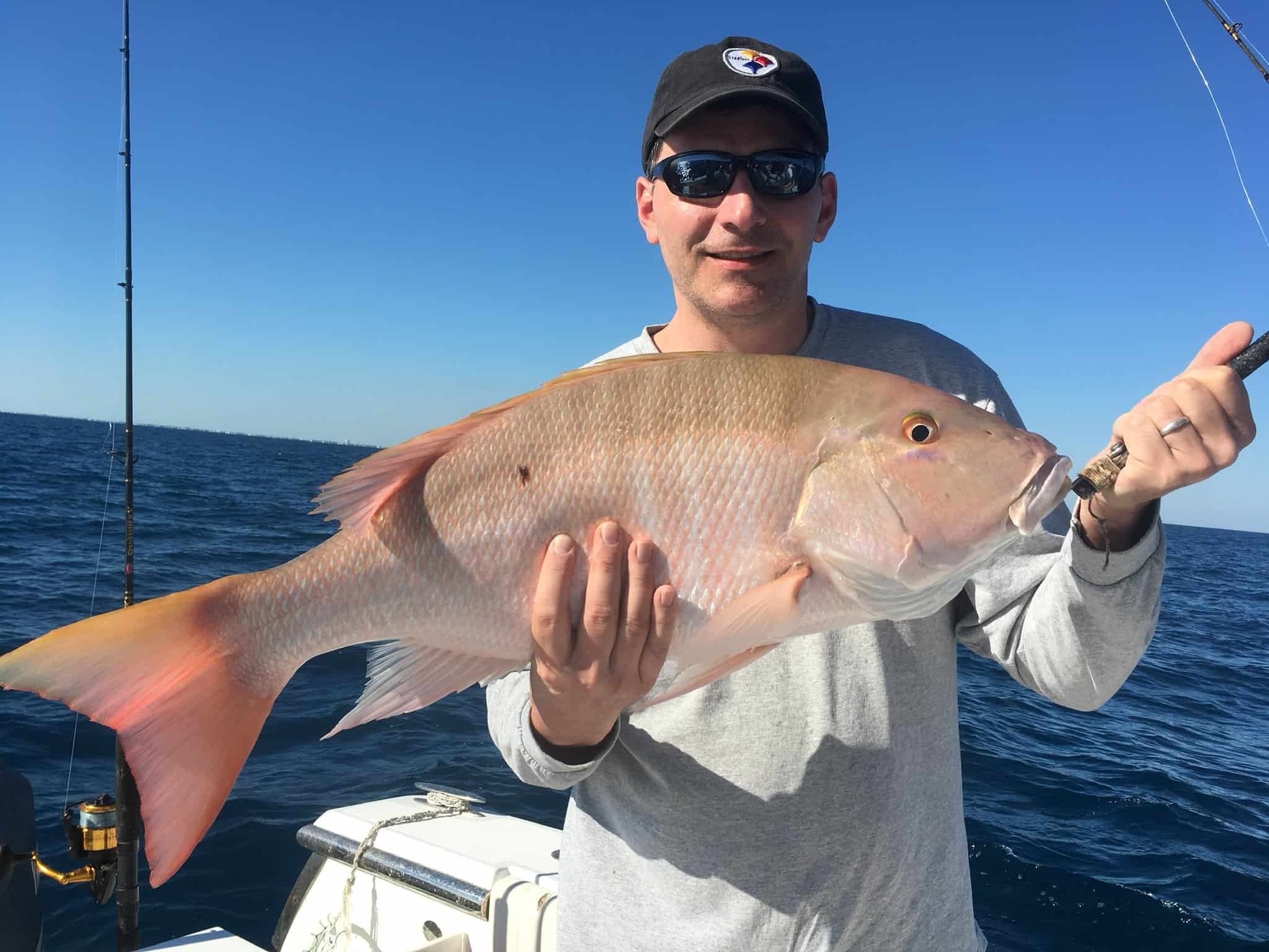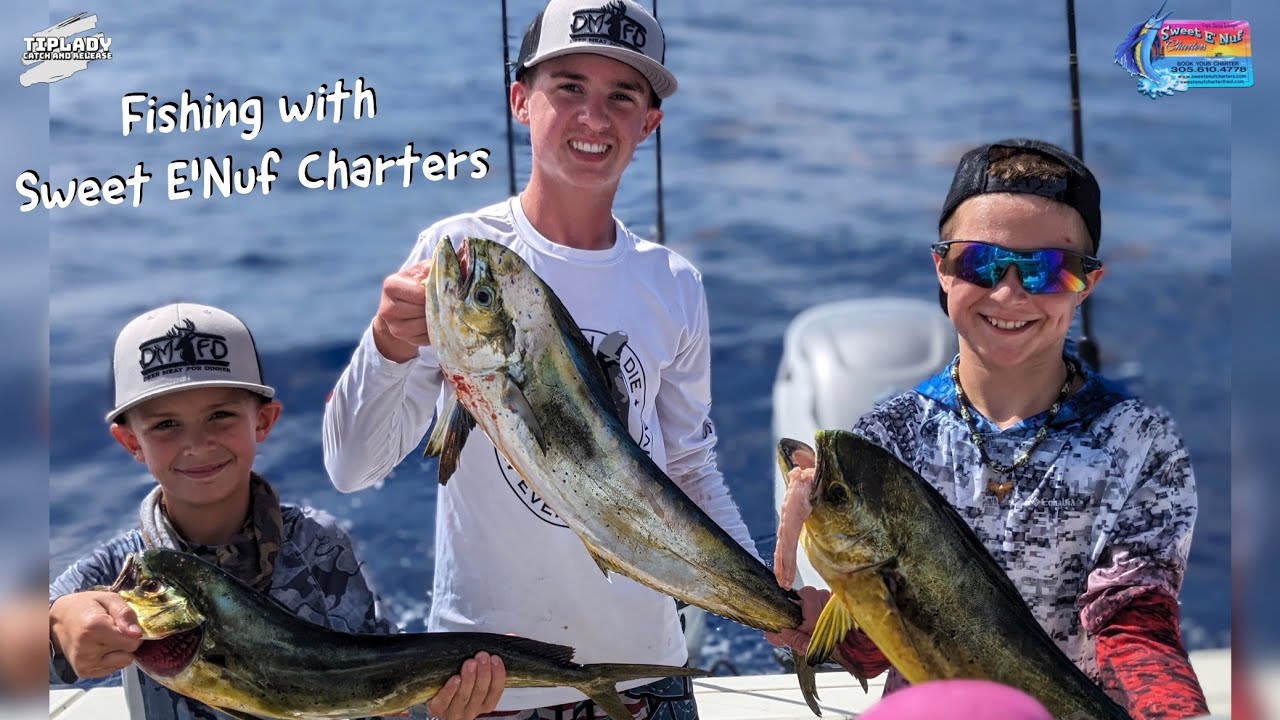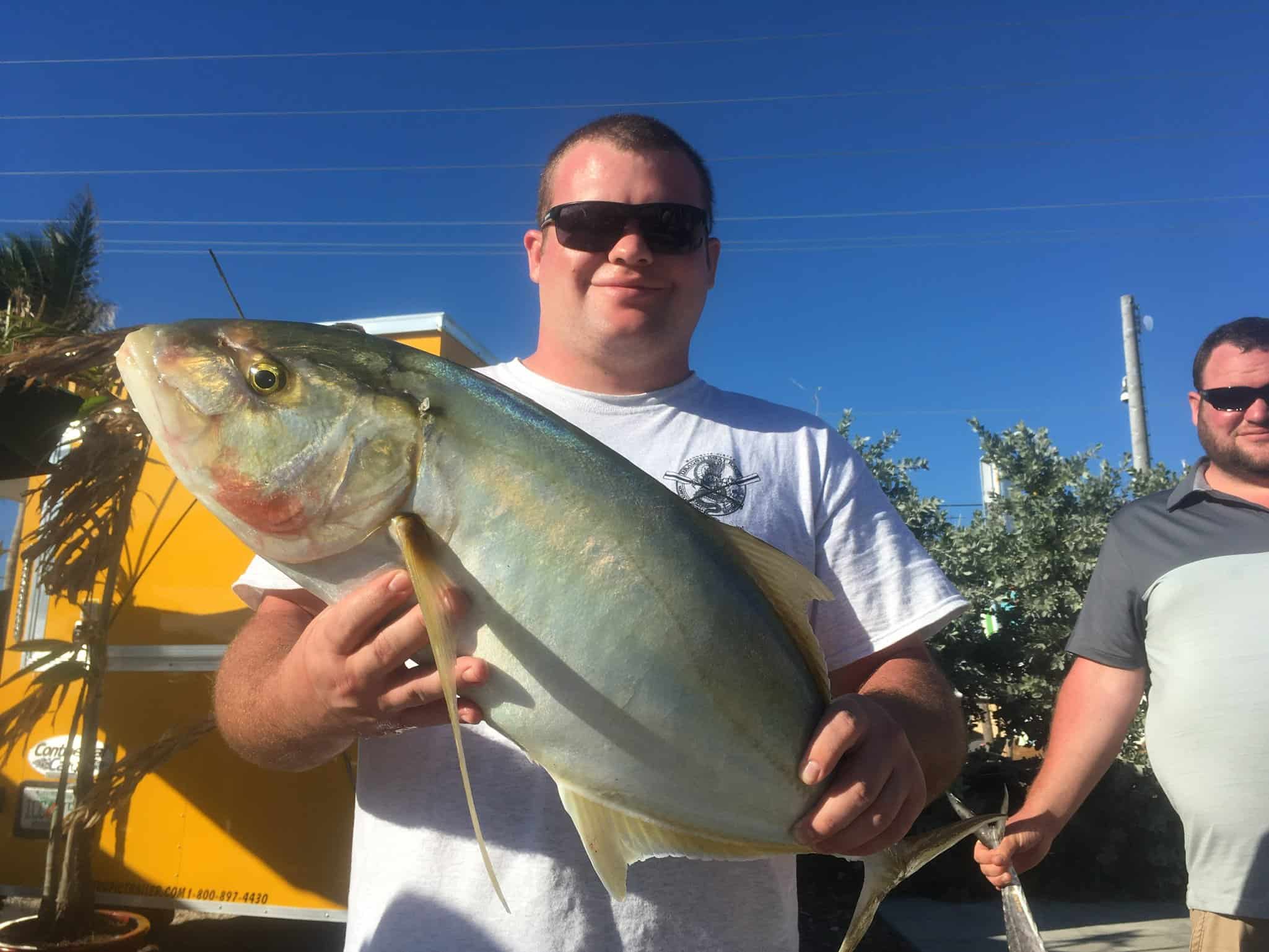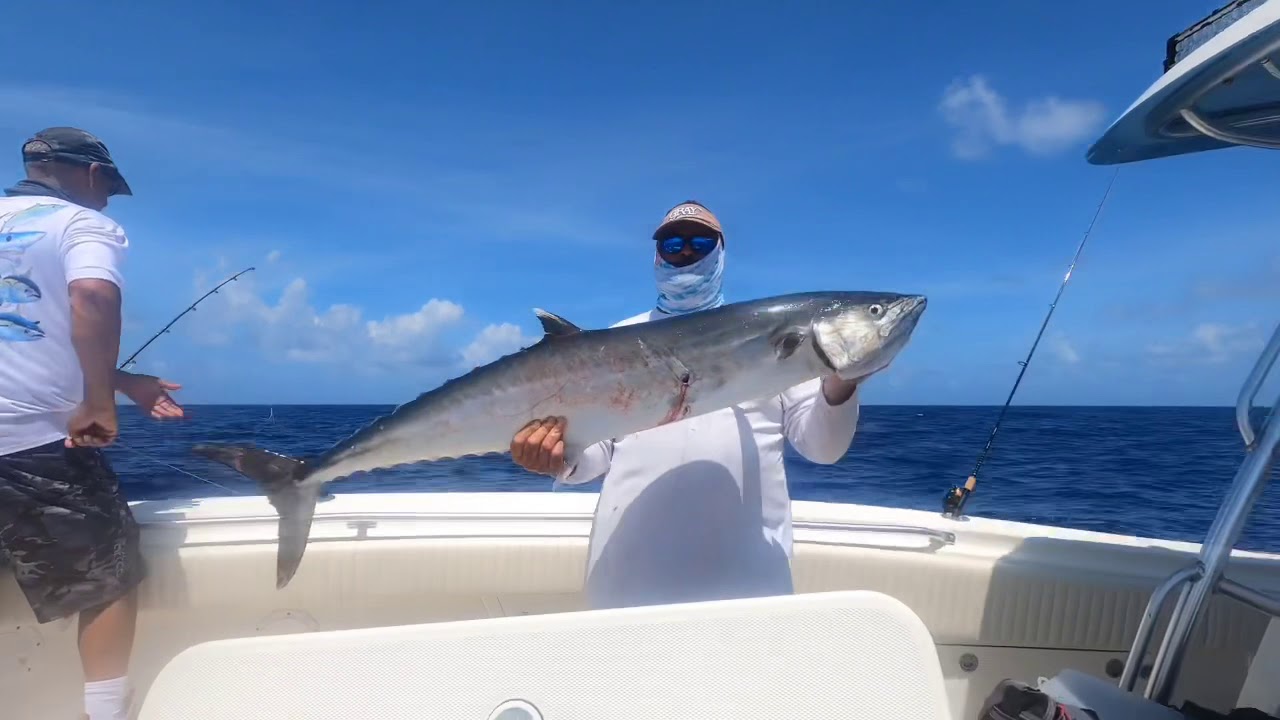Out in the Florida Straits, fishing in the deep blue sea, is my favorite place to be. From being a charter boat captain, I’ve found you can never predict anything. Just be glad the weather’s mild most of the year…
This latest adventure involves three friends and story similar to the Old Man and The Sea.
About two months before this trip, my Friend Paul and his lovely wife Alice called me up and booked an offshore trip with the intentions of targeting a blue marlin and some mahi mahi. During his phone call he told me about this amazing dredge that one of his acquaintances had, which he wanted to try out. Of course, I told him to bring it, as Marathon has marlin even if most people don’t fish for them.
Fishing for marlin is very involved with dredges, teasers and numerous baits in the water. This can be very boring most of the time because it requires ignoring the mahi mahi and tuna, and it involves lots of trolling. The process of looking for particular conditions and certain bird behavior can be very taxing. So, after hanging up the phone, I pulled up my calendar and crossed out the day he wanted and caught myself daydreaming a bit, and I was dreaming of the perfect marlin trip.
As my season went on, I forgot all about this special charter I had booked months in advance. The night before, I got a phone call from Paul. He said he was in town and ready for the marlin trip in the morning. This occurred during our peak season here in the Keys, and I was very busy and had forgotten that their trip was specifically for marlin. While talking to Paul, I pulled up my calendar on my phone and saw that this trip was indeed to target marlin. I got goosebumps with the excitement of the possibility of catching one.
As we caught up with our lives, he reminded me about his friend’s dredge he wanted to try while we were out there. He also told me they were supposed to try it the week before, during the Viking Shootout (which is a tournament held by Viking Yachts). They never got around to using it, and they very much wanted to try it out. Of course, I told him, since I don’t own one myself, I would love to check it out. I usually use top water squid teasers, but I thought that the dredge might be better – or at least look sexy in the water (as 80% of the tackle you see in the tackle store is to catch the fisherman, not the fish).
The next morning came quickly, a slight glow peering out from the darkness east on the horizon as I drove up to the dock. I opened the tailgate of my truck and started to unload my rods and marlin gear from the truck bed. I started to get goosebumps again, and I guess this happens every time I get the chance to go marlin fishing. They are the top gamefish in the world, bar none. Their sheer strength and agility alone make them without equal in any ocean.
It was about 7:00 when I finally got all the gear loaded on the boat, and iced down both Fridgid Ridgid coolers. In the live well I was thawing horse ballyhoo which were to be rigged on some knuckleheads and Islanders on 200 pound leaders. The main colors I use are black, black/purple, dark blue, chartreuse and pink. Fish will eat anything, but I really like those colors as I am a little bit of a naturalist. Most of the bait that would naturally be offered here would be flying fish, tuna, dolphin, and squid.
Once I got most of my rigs laid in my bait cooler, Paul and Alice drove up nice and early, as I am sure they were just as excited as I was. After greeting them, I helped them load their gear onboard and it was at this time Paul showed me this dredge he wanted to pull today. What a beauty it was. It had retractable arms and looked to have about 60 individual pink rubber squids. He showed me the adjustable weights for running it at different speeds. When fishing with all artificial baits, you will run the boat much faster than if you use natural baits, so having an integrated weight system is a great option.
I started the engines, tossed the lines and we were off. The anticipation was getting the best of me, or maybe it was the quad-shot of espresso from Curly’s Coffee Shop, but all I know was that my whole body was vibrating. We rounded the corner of our marina’s unmarked channel and made for the sea as I pushed the throttles to 4500 RPMs to get up to cruising speed at 31 kts.
We all looked at each other with excitement and I chimed in and laid out my plan of attack. Since I’d been out on the water every day, I’d been seeing free-jumping marlin just on the inside edge of the wall (which is the continental shelf). I proclaimed that we should start there. Putting the blinders on, we passed a few sets of birds that I was sure had dolphin under them, but kept the course true and headed straight to the area where I had seen many marlin all week.
After about a thirty-five minute run on calm majestic blue water I looked down and saw that we were close, so I powered down the engines and proceeded to lay out the outriggers while leaving the course to the auto pilot. I proceeded to pull out four rigged baits and started systematically setting up our spread.
After all the baits were in position, the amazing dredge was unfolded and placed into the water, and just as I suspected, it was sexy! I mean it looked amazing just out of the prop wash on the port side with our first bait on the port flat line right behind it. This dredge was truly a one of a kind. I think it only took twenty minutes – and fish on!
The fish was big, pulling drag steadily away from the boat, as we waited for it to breach. To our surprise, it didn’t breach but kept dumping the line at an impressive rate. Alice and I frantically pulled lines in and finally got the dredge out and threw it in the back trough so it was out of the way. Looking at Paul’s reel, I notice that the backing was starting to show. I quickly started to tack over to his fish.
At this point, the mystery fish (which I was thinking since it hadn’t surfaced it might be a big yellowfin tuna) started to slow down, and Paul was able to gain back a hundred yards of line. Thirty minutes into the battle I was able to get pretty close and we finally saw something. It was dark and big, as it was still sixty to seventy feet down.
Paul, with beads of sweat dripping off of him as if he just got splashed, was doing a phenomenal job putting solid pressure of the fish and it was at this time the fish took off as if it weren’t even attached to a fifty pound outfit and a weary Paul. All that line we just gained back was gone and then some, as now the fish was in high gear dumping us.
At that moment my heart jumped as I watched the splice from the backing fly through the guides at warp speed. It was at this moment that we were finally able to identify the fish as it leapt from the cobalt blue ocean. “It’s a blue marlin!”, I yelled, my heart still pounding. I slammed the engines in gear to chase him down. The marlin jumped several times, lurching away from us. Every time I got close to him he would jump and run, greyhounding away from us – he truly was a superstar.
After about an hour and a half, we subdued him long enough to get a few pictures and some video (which somehow got erased). While holding the leader, the 200 pound test finally gave way, and the fish we been battling swam off unharmed, but I think we may have hurt his pride. We all sat there and watched him swim down into the deep, dark blue. What an experience, Paul’s first blue marlin, on the day we went specifically for them. As one of my role models growing up used to say, “I love it when a plan comes together”.

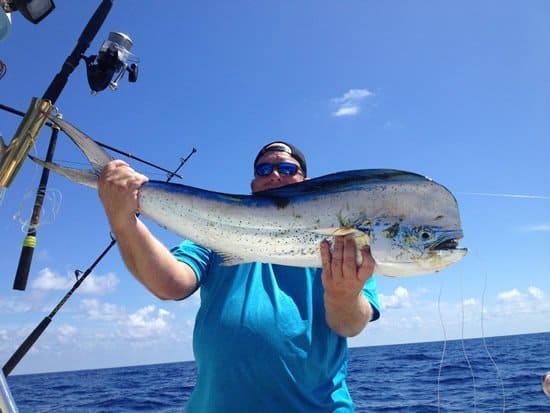
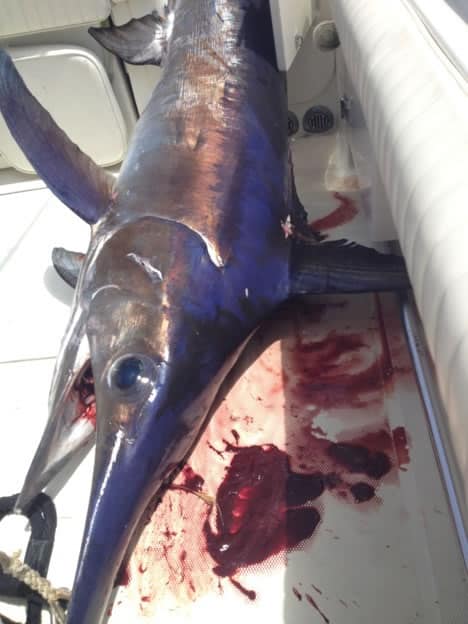
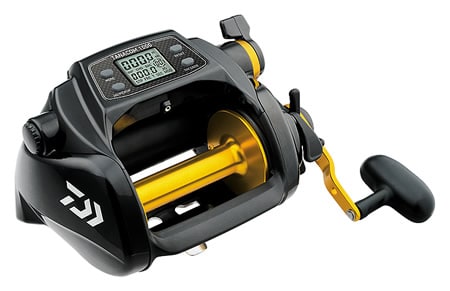
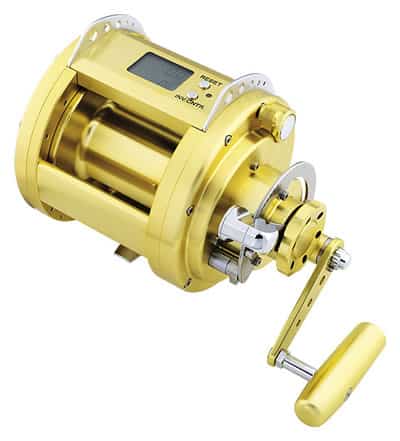
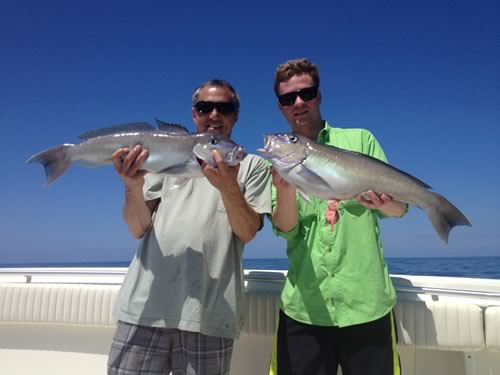
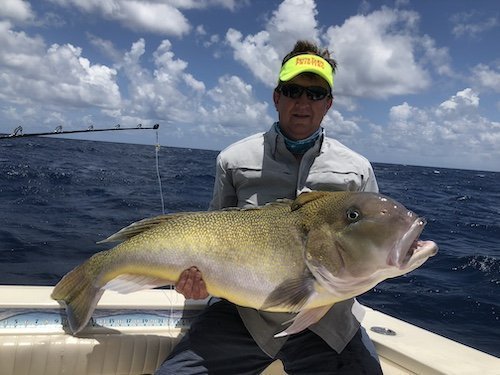
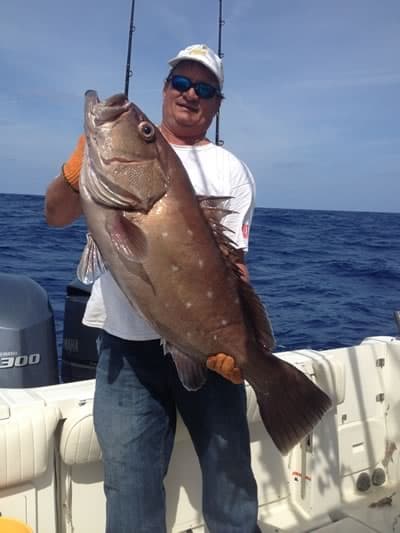
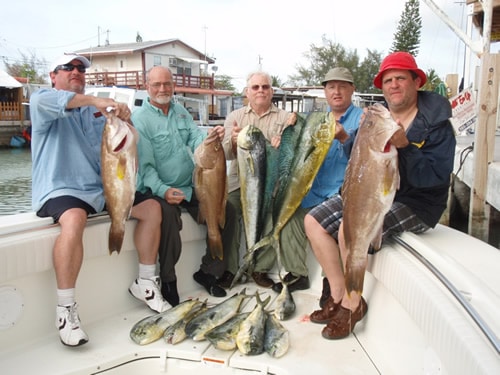
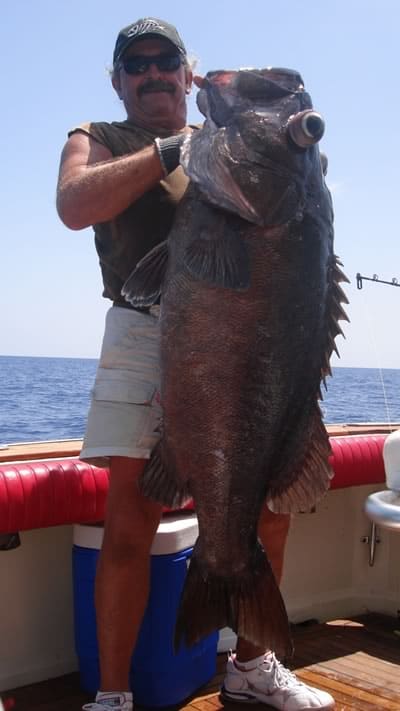
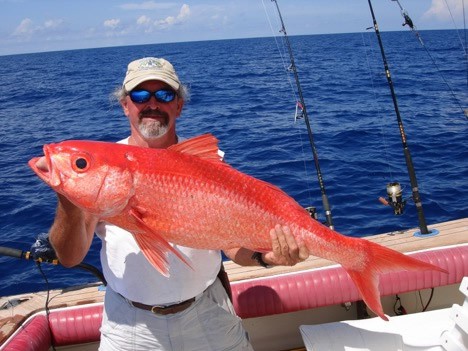
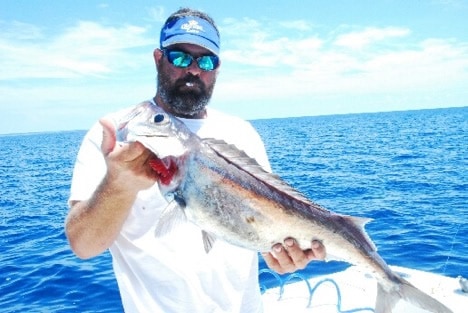
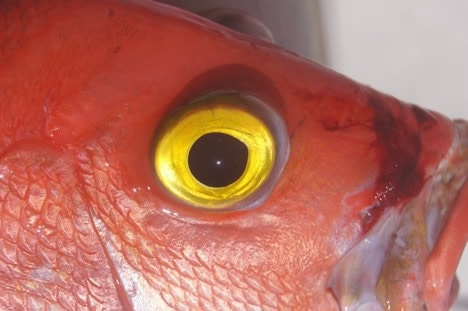

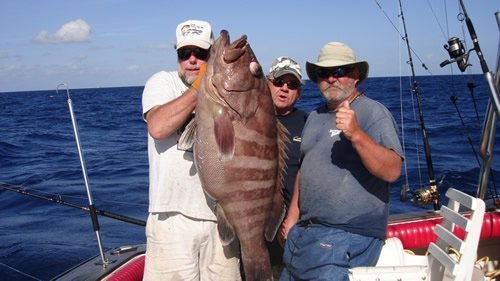
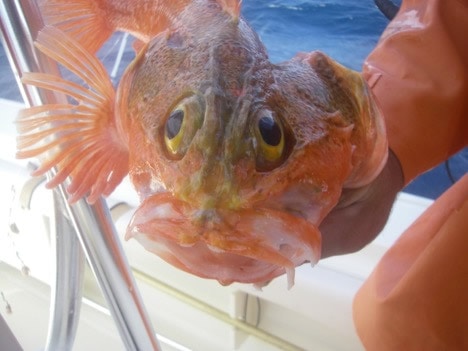
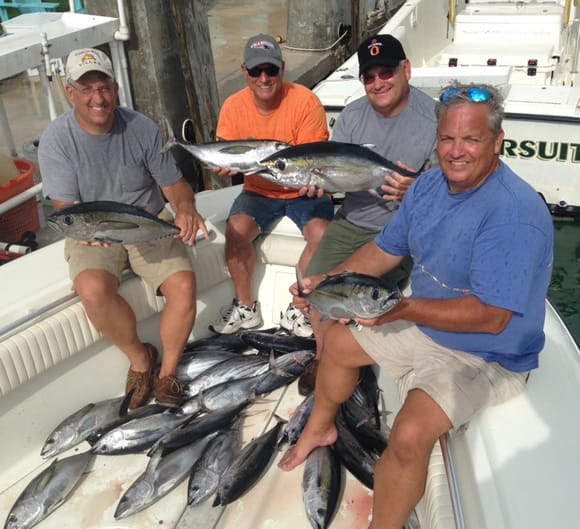
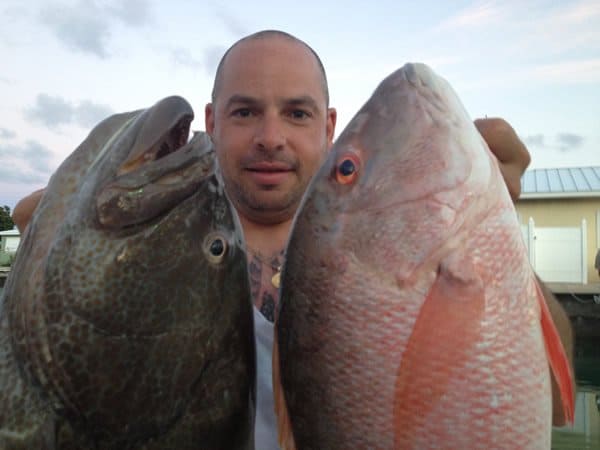
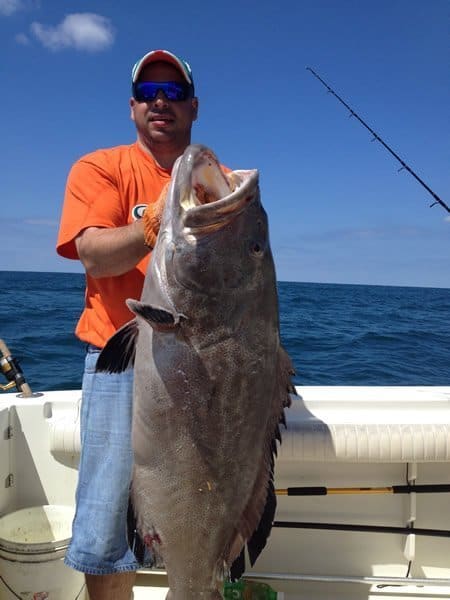 This week has been great, easy fishing. Anchoring and re-anchoring, as your location is very important. When anchoring you may have to re-anchor a few times till you gauge the current and wind right. When wind and current are close to equal strength the anchoring becomes very tricky to get right. One minute you are sitting perfect and the wind could let up a few knots and you could swing 100’-400’ away from your spot. But if this happens don’t re-anchor right away because muttons are continuously swimming around the structure or up and down the reef looking for food and avoiding predators.
This week has been great, easy fishing. Anchoring and re-anchoring, as your location is very important. When anchoring you may have to re-anchor a few times till you gauge the current and wind right. When wind and current are close to equal strength the anchoring becomes very tricky to get right. One minute you are sitting perfect and the wind could let up a few knots and you could swing 100’-400’ away from your spot. But if this happens don’t re-anchor right away because muttons are continuously swimming around the structure or up and down the reef looking for food and avoiding predators.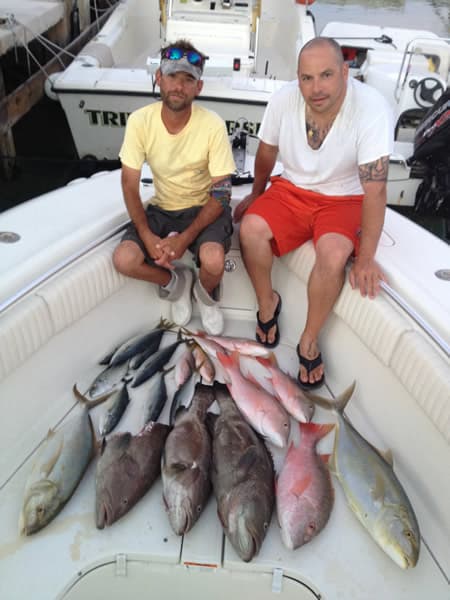 I have yellow tailed this week a bit with great success. Fishing the deeper water I have been averaging two pound yellowtail and some groupers and muttons. But mainly when
I have yellow tailed this week a bit with great success. Fishing the deeper water I have been averaging two pound yellowtail and some groupers and muttons. But mainly when 